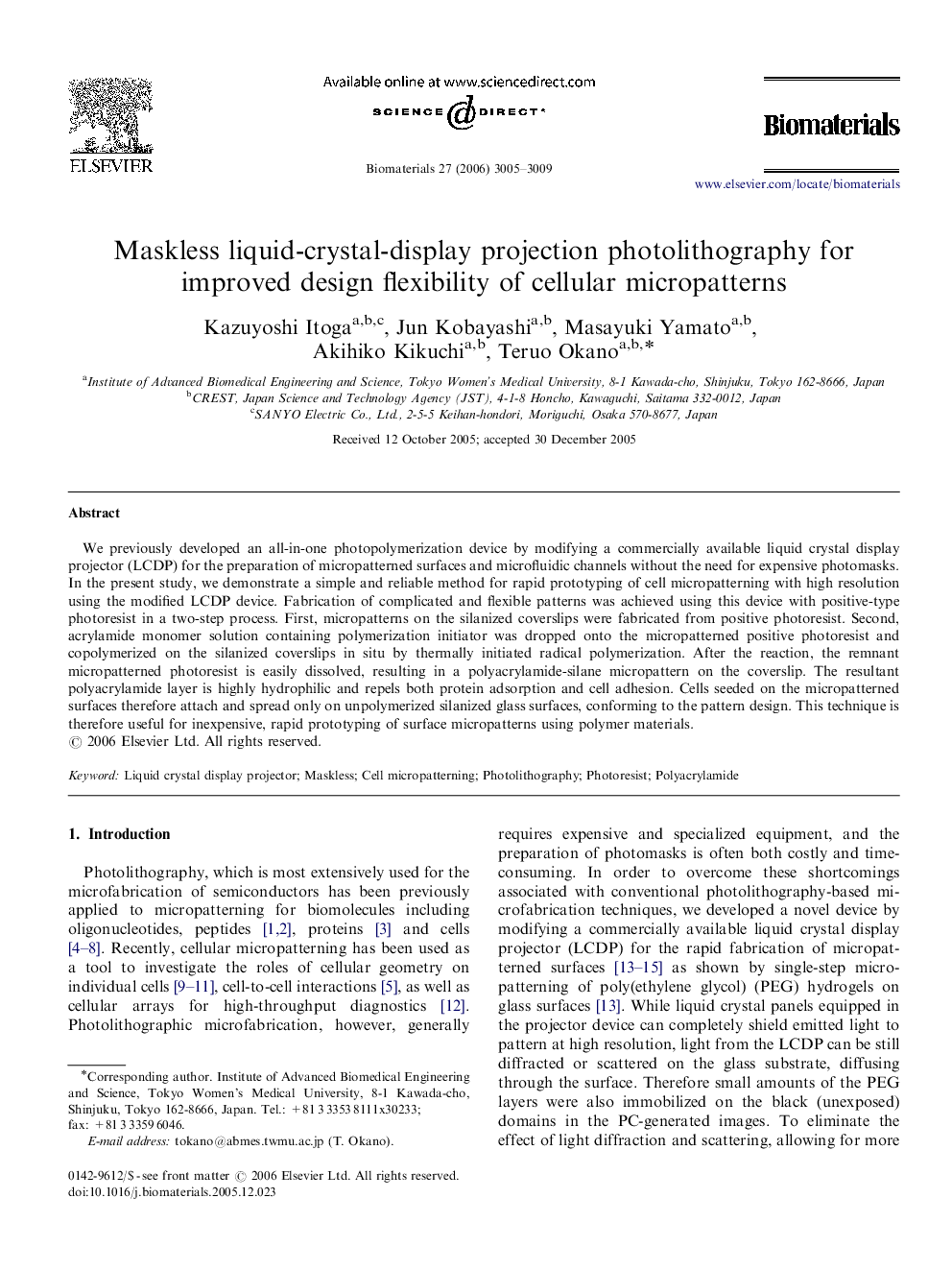| Article ID | Journal | Published Year | Pages | File Type |
|---|---|---|---|---|
| 11740 | Biomaterials | 2006 | 5 Pages |
We previously developed an all-in-one photopolymerization device by modifying a commercially available liquid crystal display projector (LCDP) for the preparation of micropatterned surfaces and microfluidic channels without the need for expensive photomasks. In the present study, we demonstrate a simple and reliable method for rapid prototyping of cell micropatterning with high resolution using the modified LCDP device. Fabrication of complicated and flexible patterns was achieved using this device with positive-type photoresist in a two-step process. First, micropatterns on the silanized coverslips were fabricated from positive photoresist. Second, acrylamide monomer solution containing polymerization initiator was dropped onto the micropatterned positive photoresist and copolymerized on the silanized coverslips in situ by thermally initiated radical polymerization. After the reaction, the remnant micropatterned photoresist is easily dissolved, resulting in a polyacrylamide-silane micropattern on the coverslip. The resultant polyacrylamide layer is highly hydrophilic and repels both protein adsorption and cell adhesion. Cells seeded on the micropatterned surfaces therefore attach and spread only on unpolymerized silanized glass surfaces, conforming to the pattern design. This technique is therefore useful for inexpensive, rapid prototyping of surface micropatterns using polymer materials.
